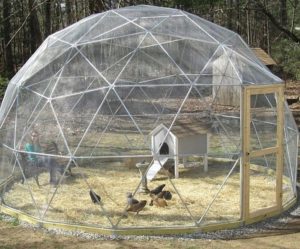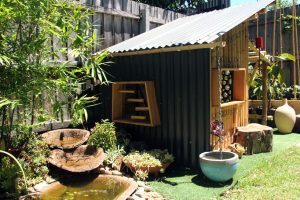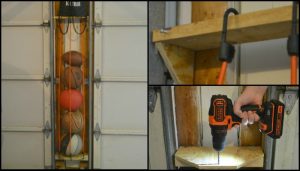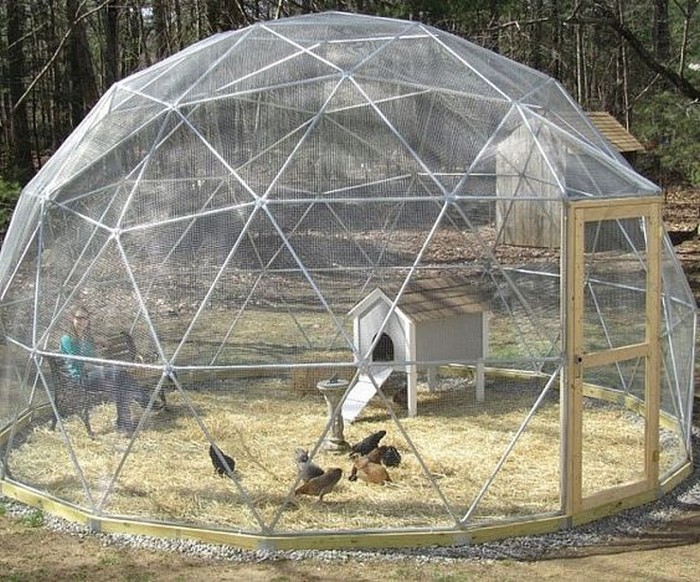
Wondering what a geodesic chicken tractor might be? A geodesic chicken tractor is a coop that can be easily moved and often has wheels. They are also known as chicken arks. Geodesic chicken tractors are a great way to keep your chickens safe and let them roam freely.
A fixed chicken coop has one major disadvantage: over time, it can become just a patch of bare earth. A moveable coop, or “chicken tractor,” overcomes this problem by letting you move your chickens to new pastures from time to time. This way, they can enjoy fresh grass and insects while avoiding the risk of soil depletion.
If you are looking for a strong and light structure, a geodesic chicken dome may be the right choice for you. This type of dome is made of triangles that are arranged in a geodesic pattern. This pattern creates a strong and stable structure that can resist high winds and heavy snow loads. Geodesic chicken domes are an excellent choice for those who want a durable and long-lasting structure.
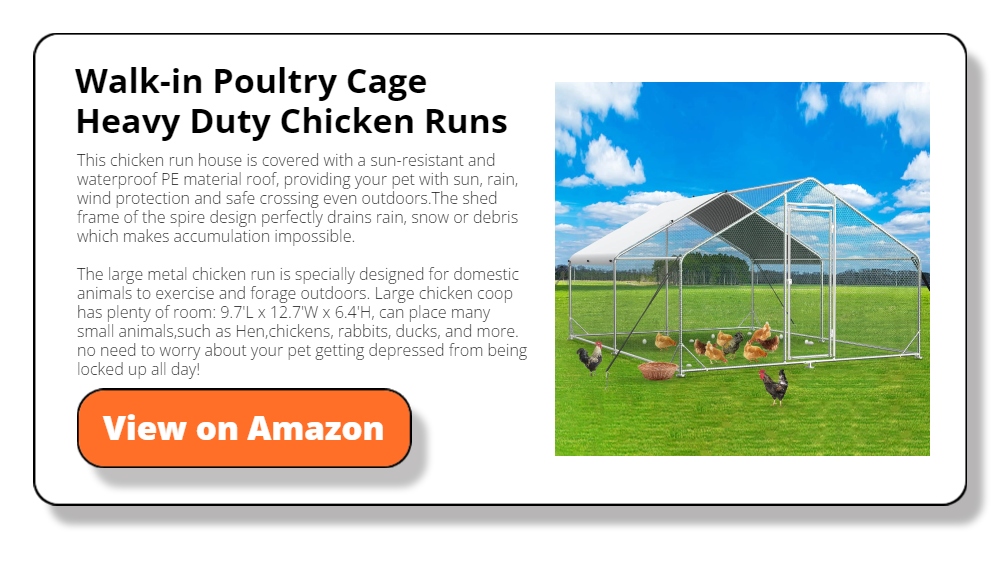
Although constructing a geodesic dome is more complex compared to a standard chicken tractor, the benefits of this undertaking are undeniably fulfilling. Geodesic domes exhibit outstanding strength and stability, making them an excellent choice for protecting chickens from potential risks. Additionally, they excel in providing superior ventilation and creating a cooler habitat for chickens, especially in hot weather conditions.
Chickens are excellent at preparing the soil for growing vegetation. By choosing a geodesic structure to house your chickens, you can create circular beds. This is an extremely efficient way to use space and results in less soil disturbance.
The chicken coop can be placed in the centre of the garden, and the chickens will naturally fertilize the soil as they scratch and peck around the perimeter of the garden. This will create a nutrient-rich environment for your plants to thrive. These are great for guild planting and are a more efficient way to use space as compared to rectangular beds.
This kind of geodesic chicken tractor is also easier to move around the yard. One person can do it alone just by going inside the middle of the dome structure and lifting it to transfer to another location. This is a great benefit if you need to move your chicken tractor often to give your chickens access to fresh pasture.
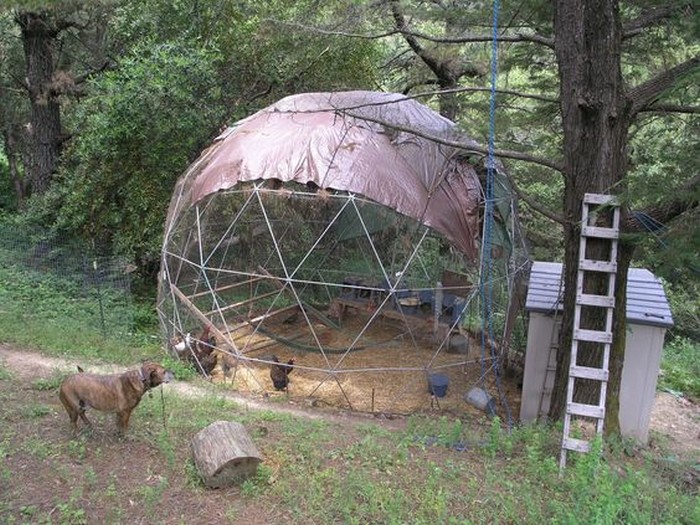
When built properly, you certainly won’t have to worry about your geodesic chicken tractor falling apart. It can even last for years and remain sturdy – it just depends on the quality of your build and maintenance.
Are you looking for an attractive and unique chicken coop for your backyard? Why not build your chooks a geodesic chicken coop? It would be a beautiful structure to have in your yard!
Are you interested in learning how to build a geodesic chicken tractor? If so, you’re in luck! In this post, you will delve into the entire process, step by step.
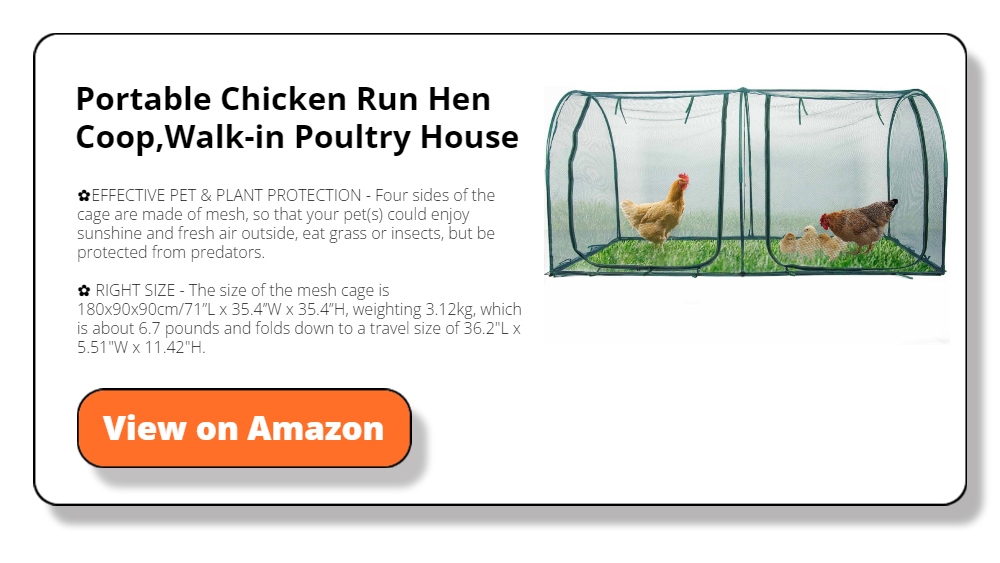
Contents
How to Make a Geodesic Chicken Tractor
If you’ve ever dreamt of giving your chickens a coop that’s both practical and visually stunning, then you’re in for a treat. Get ready to embark on a clucking great adventure as you unveil the secrets of creating your very own geodesic chicken tractor. This DIY masterpiece combines the brilliance of geodesic design with the charm of a mobile chicken coop, ensuring your feathered friends live in style while you enjoy fresh, farm-to-table eggs.
Gather all the essential materials and tools and hatch the plan for the most egg-extravagant chicken tractor!
Materials
- PVC Piping or 3/4″ Rural Grade Poly Pipe
- Plastic Pipes or Tent Pegs
- Special Blue Solvent Glue
- Wire or Cable Ties (as fasteners)
- Chicken Wire
- Tarpaulin
- Large Rocks
Tools
- Measuring Tape
- Cordless Drill
- PVC Pipe Cutter
- Markers (2 colours)
Steps
Step 1: Planning Your Geodesic Chicken Tractor
Before you dive into building your geodesic chicken tractor, it’s essential to plan it out. Determine the size you want, keeping in mind the number of chickens you have or plan to acquire. Sketch a rough design on paper using one marker colour to outline the structure and another to mark where you’ll connect the pipes.
Step 2: Cut and Prepare PVC Piping or Poly Pipe
Using your measuring tape and PVC pipe cutter, carefully measure and cut the PVC or poly pipes into the required lengths according to your design. These will form the framework of your chicken tractor. Remember, accuracy in measurement is key to ensuring your geodesic structure is sturdy and well-balanced.
Step 3: Assemble the Geodesic Framework
Now it’s time to put your design into action. Use the special blue solvent glue to securely attach the PVC or poly pipes at their designated connection points. Ensure the angles and joints match your initial design for a proper geodesic shape. Set sufficient drying time as per the glue instructions.
Step 4: Reinforce With Wire or Cable Ties
To add extra stability to your geodesic framework, use wire or cable ties at key junctions. Wrap them tightly around the joints, ensuring everything is securely fastened. This will prevent any wobbling or shifting of the structure.
Step 5: Cover With Chicken Wire
Lay chicken wire across your geodesic frame, affixing it firmly using wire ties or fasteners. Ensure comprehensive coverage, encompassing all sides, including the top, to provide protection for your chickens while maintaining optimal conditions for ventilation and sunlight.
Step 6: Create the Roof With Tarpaulin
Measure and cut a piece of tarpaulin to fit the top of your chicken tractor. Leave some overhangs to provide shade and protection from the elements. Use the cordless drill to attach the tarpaulin securely to the PVC or poly pipe frame.
Step 7: Weigh It Down With Large Rocks
To keep your chicken tractor in place, place large rocks or other heavy objects around the base. This prevents it from being moved by strong winds or curious critters.
Step 8: Add Entry and Exit Points
Using your cordless drill, create entry and exit points for your chickens by cutting holes in the chicken wire and attaching flaps.
Step 9: Final Touches
Inspect your geodesic chicken tractor for any sharp edges or potential hazards, and make necessary adjustments. Ensure there are food and water containers accessible to your chickens within the tractor.
Now, you’ve built a geodesic chicken tractor that not only keeps your chickens safe but also adds a unique architectural flair to your backyard or farm. Enjoy the benefits of fresh eggs and happy, mobile chickens!
Thanks to Milkwood for providing valuable insights into this geodesic chicken tractor project.
Maximizing Your Geodesic Chicken Tractor
A geodesic chicken tractor offers a versatile and efficient solution for backyard chicken keeping. Combining the strength and stability of a geodesic dome with the mobility of a chicken tractor, this innovative design provides a secure and comfortable environment for your feathered friends while allowing them access to fresh forage and pasture.
In this comprehensive guide, we’ll explore various strategies and techniques to maximize the efficiency and functionality of your geodesic chicken tractor, ensuring the health and well-being of your flock while minimizing labour and maintenance.
Understanding the Geodesic Chicken Tractor
Before delving into strategies for maximizing efficiency, it’s essential to understand the fundamental principles of a geodesic chicken tractor.
This unique structure consists of interconnected triangular panels made from lightweight and durable materials such as PVC pipes and chicken wire. The geodesic design provides exceptional strength and stability, while the mobility of the tractor allows for easy rotation of grazing areas and access to fresh forage.
Size and Configuration
One of the first considerations when maximizing the efficiency of your geodesic chicken tractor is determining the appropriate size and configuration for your flock. Consider factors such as the number of chickens you plan to house, their breed and size, and the available space in your backyard or garden.
Optimal sizing ensures that your chickens have ample room to move and forage while preventing overcrowding and stress.
Mobility and Rotation
Maximizing the benefits of your geodesic chicken tractor relies on a regular rotation to fresh pasture and forage areas. Take advantage of the tractor’s mobility by moving it to a new location every day or as needed.
Rotating grazing areas not only prevents overgrazing and depletion of resources but also promotes soil health and fertility by allowing time for vegetation to recover and regenerate.
Forage Management
To maximize forage availability and nutritional diversity for your chickens, consider planting a diverse range of forage crops and cover crops in and around the tractor’s grazing area.
This can include grasses, legumes, herbs, and vegetables that provide a variety of nutrients and textures for your flock to enjoy. Additionally, incorporate rotational grazing practices to optimize forage utilization and minimize waste.
Shelter and Protection
Ensure that your geodesic chicken tractor provides adequate shelter and protection for your flock from the elements and predators.
Consider adding a removable tarp or shade cover to protect against sun, rain, and wind, while also providing ventilation to prevent overheating. Install predator-proofing measures such as secure latches, locks, and hardware cloth to deter predators and keep your chickens safe.
Feeding and Watering Systems
Maximize efficiency in feeding and watering by implementing automated or semi-automated systems within your geodesic chicken tractor. Consider installing gravity-fed or nipple waterers that provide a constant supply of fresh water without the need for frequent refills.
Similarly, use hanging feeders or treadle feeders to minimize spillage and waste, ensuring that your flock has access to clean and nutritious feed at all times.
Nesting and Roosting Spaces
Provide comfortable and secure nesting and roosting spaces within your geodesic chicken tractor to encourage natural behaviours and egg production. Incorporate nesting boxes lined with clean bedding material in a secluded area of the tractor, away from high-traffic areas.
Install roosting bars at varying heights to accommodate the preferences of different chicken breeds and ages.
Health and Hygiene
Maintaining optimal health and hygiene practices is crucial for maximizing the efficiency of your geodesic chicken tractor and ensuring the well-being of your flock. Implement a regular cleaning and sanitation schedule to remove waste, debris, and soiled bedding from the tractor, minimizing the risk of disease and parasites.
Use natural and non-toxic cleaning agents to avoid harmful chemical residues that could affect your chickens’ health.
Integration with Garden and Composting Systems
Maximize the benefits of your geodesic chicken tractor by integrating it with your garden and composting systems. Use the tractor’s mobility to strategically position it in areas of the garden that require soil fertility improvement or weed control.
Allow your chickens to forage in garden beds after harvest to help clean up debris, control pests, and fertilize the soil with their manure. Additionally, incorporate a composting system within or adjacent to the tractor to turn chicken waste and bedding into nutrient-rich compost for use in the garden.
So, maximizing the efficiency and functionality of your geodesic chicken tractor requires careful planning, management, and attention to detail.
By optimizing size and configuration, promoting mobility and rotation, managing forage availability, providing shelter and protection, implementing efficient feeding and watering systems, creating comfortable nesting and roosting spaces, maintaining health and hygiene, and integrating with garden and composting systems, you can create an optimal environment for your flock while minimizing labour and maintenance.
With these strategies in place, your geodesic chicken tractor will not only provide a sustainable source of fresh eggs but also contribute to a healthier and more resilient backyard ecosystem.
Click on any image to start the lightbox display. Use your Esc key to close the lightbox.![]()
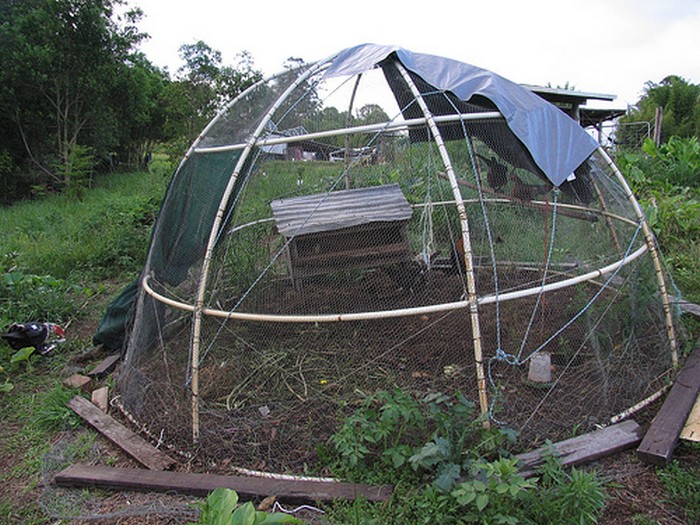
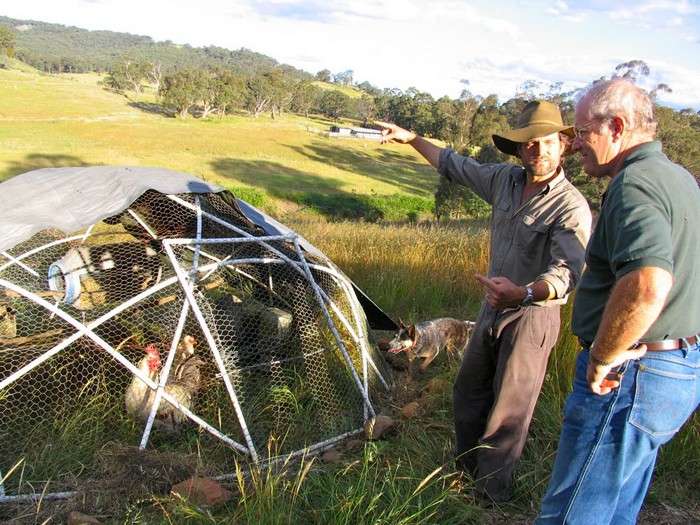
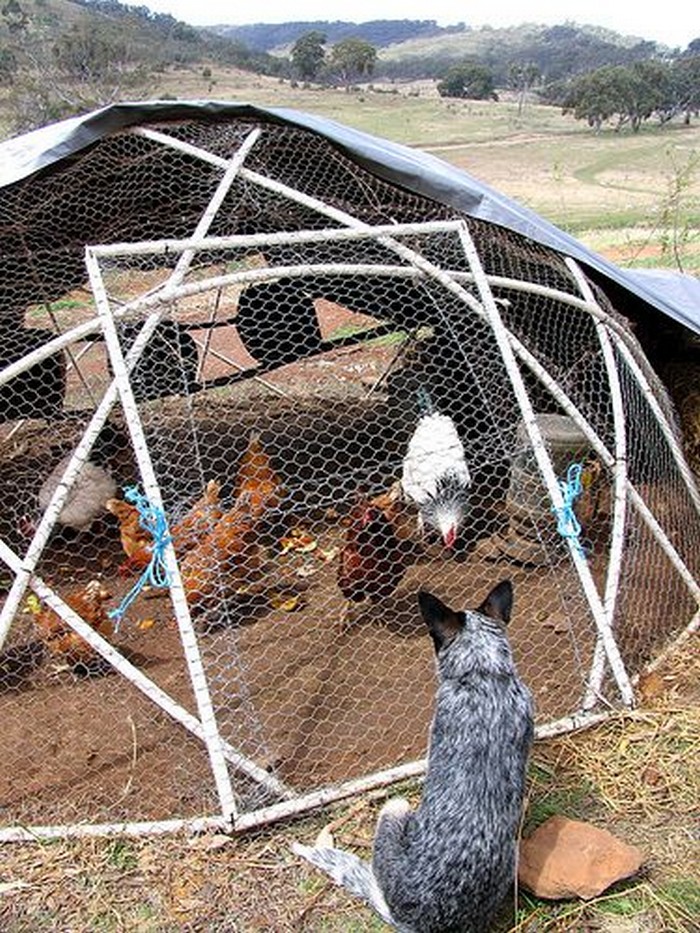
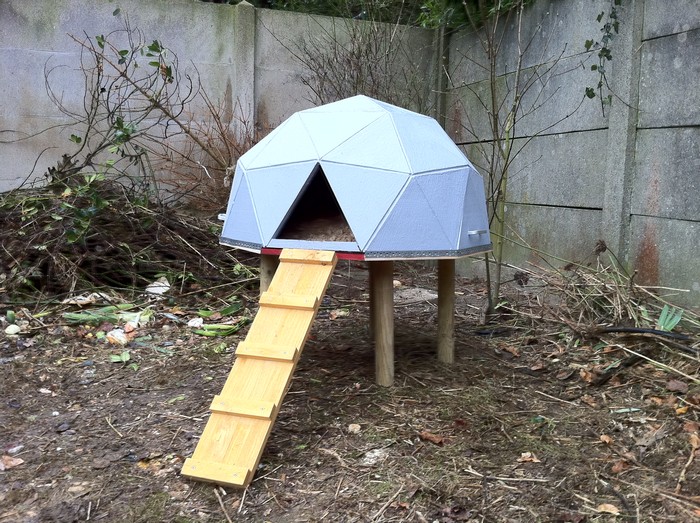
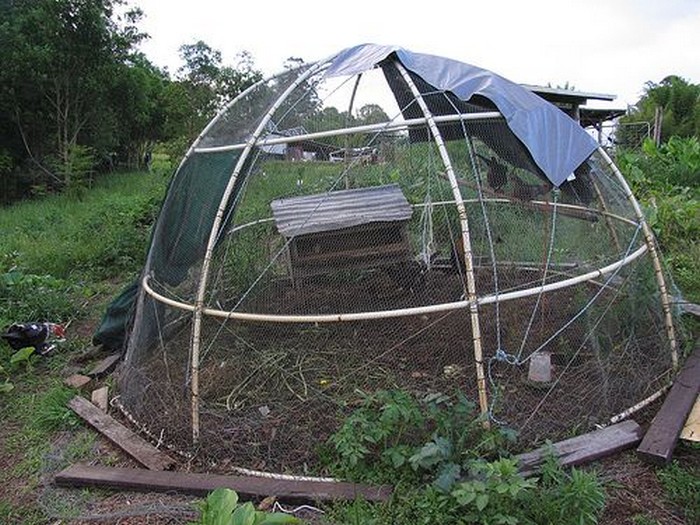
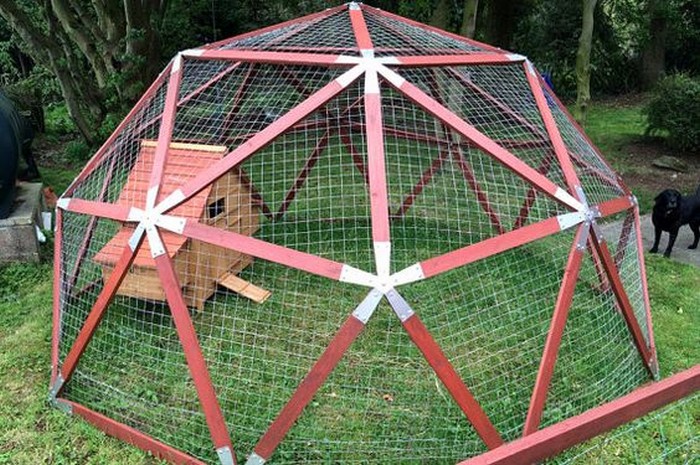
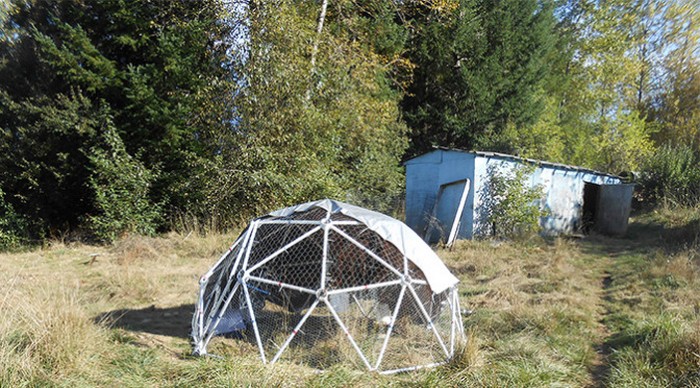
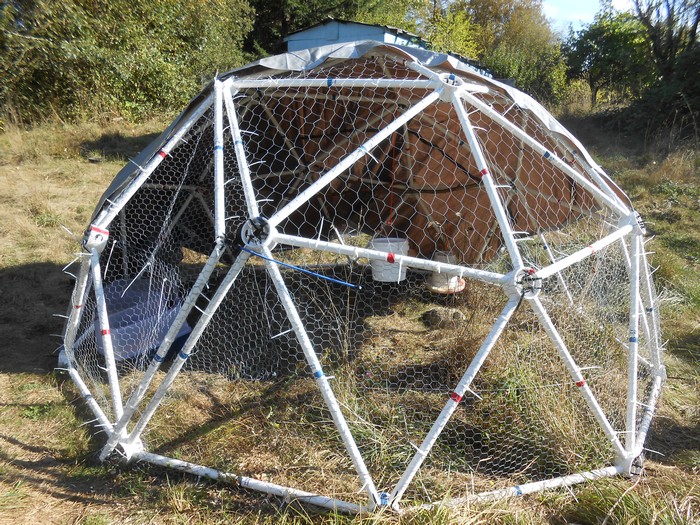


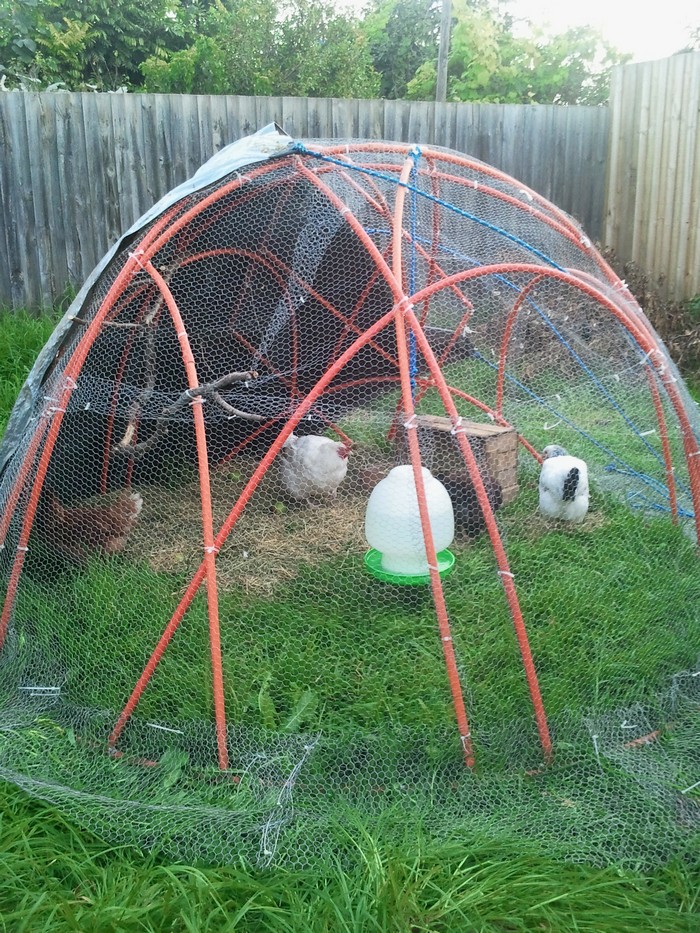

Building a Geodesic Chicken Tractor With Ease
Get ready to transform your chicken-keeping game with this guide. Discover the art of building a mobile masterpiece that blends form and function seamlessly. From planning the perfect design to adding the finishing touches, this step-by-step journey ensures your feathered friends live in style while you enjoy fresh, farm-to-table eggs.
Whether you’re a seasoned DIY enthusiast or a poultry novice, this simple yet sophisticated approach will have you clucking with satisfaction in no time.
Ready for a cluck-worthy adventure in coop construction?
Frequently Asked Questions
1. What is a geodesic chicken tractor?
A geodesic chicken tractor is a mobile coop structure designed to house chickens while allowing them access to fresh forage. It combines the principles of geodesic domes, known for their strength and stability, with the functionality of a chicken tractor, enabling easy movement around the yard or garden.
2. How is a geodesic chicken tractor different from a traditional coop?
Unlike traditional stationary coops, a geodesic chicken tractor is mobile, allowing chickens to graze on fresh pasture each day. Its geodesic dome design provides exceptional strength and stability, while its lightweight construction makes it easy to move and maneuver.
3. How long does it take to build a geodesic chicken tractor?
The time it takes to build a geodesic chicken tractor depends on your level of experience with DIY projects and the complexity of the design. In general, constructing a basic geodesic chicken tractor can be completed in a weekend with the help of a few friends or family members.
4. How many chickens can a geodesic chicken tractor accommodate?
The size of your geodesic chicken tractor will determine how many chickens it can comfortably accommodate. As a general rule of thumb, allow for approximately 2-4 square feet of space per chicken to ensure they have enough room to move and roost comfortably.
5. How do you move a geodesic chicken tractor?
Moving a geodesic chicken tractor is relatively straightforward, thanks to its lightweight construction and mobile design. Simply lift one end of the tractor and roll it to the desired location, ensuring that the chickens are safely contained inside. Alternatively, you can attach wheels or skids to the bottom of the tractor to make moving it even easier.
6. Can you customize your geodesic chicken tractor?
Yes, you can customize your geodesic chicken tractor to suit your specific needs and preferences. Consider adding features such as additional ventilation windows, nesting boxes, or feeding and watering systems to enhance functionality and convenience.
7. How do you maintain a geodesic chicken tractor?
Regular maintenance is essential to ensure the longevity and functionality of your geodesic chicken tractor. Inspect the structure periodically for signs of wear and tear, such as loose connections or damaged chicken wire, and make repairs as needed. Additionally, clean the interior regularly to remove waste and debris, and provide fresh bedding material for nesting boxes and roosting areas.
8. Can you use a geodesic chicken tractor in all weather conditions?
While a geodesic chicken tractor provides shelter and protection for your flock, it may not be suitable for extreme weather conditions such as heavy rain, strong winds, or extreme temperatures. Consider adding additional shade cover or insulation during inclement weather to ensure the comfort and well-being of your chickens.
9. Are there any regulations or restrictions for using a geodesic chicken tractor?
Before building or using a geodesic chicken tractor, check local regulations and zoning laws to ensure compliance. Some areas may have restrictions on the size, placement, or several chickens allowed, so it’s essential to research and understand the rules in your area before proceeding with your project.


